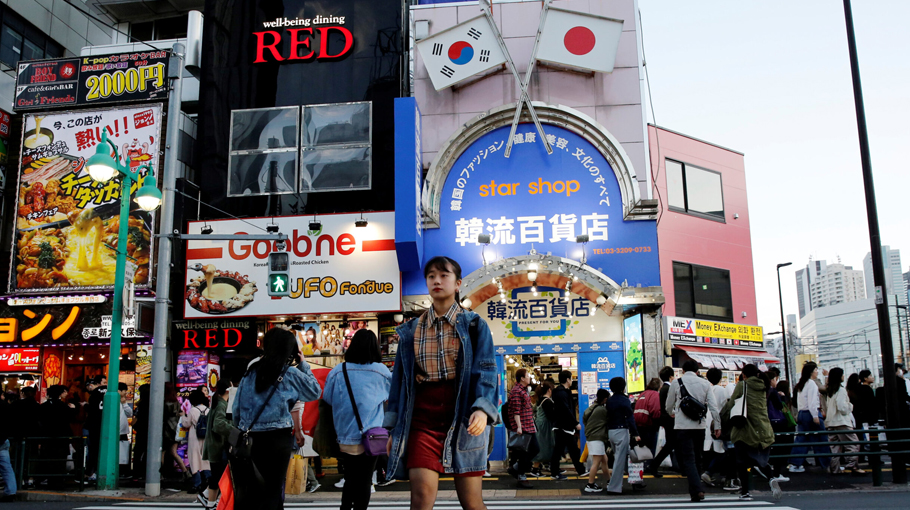Japan’s multiculturalism fails to keep pace with rising migration

Japanese society is diversifying at a rapid rate. While the general population continues to fall and age, the foreign population reached a record 3.2 million in June 2023 with the number of foreign workers exceeding more than 2 million for the first time in October 2023.
Growing labour shortages have seen the government make unprecedented efforts to lift migration, starting with a new Specified Skilled Worker (SSW) system in 2019, marking the first time Japan has officially accepted blue-collar workers. The scheme consists of two visa types, SSW1 and SSW2. The latter allows workers to bring their families and to stay permanently in Japan.
The government is also finalising plans to replace the Technical Intern Training Program with a new three-year training and employment program that will allow for job mobility. As long as applicants pass language examinations and meet other requirements, foreign workers will be able to work in Japan for up to eight years, with the possibility of permanent stay if they achieve SSW2 status.
The government has been slow to develop national support systems. It was only after a coalition of cities published the Hamamatsu Declaration in 2001, demanding the government create a coherent integration policy, that a national action plan was finally published
In 2021, Nagano’s prefectural assembly called for the national government to pass a Basic Law on Multicultural Coexistence to establish ‘a clear national policy to accept foreign residents’. In 2022, the government announced a five-year Roadmap for the Realisation of a Society of Harmonious Coexistence with Foreign Nationals, creating a long-term vision of an ‘inclusive society where foreigners can play active roles’. Still, as with previous national government measures, this was big on goals and short on specifics.
Japanese-style multiculturalism is a non-integrative policy that provides services to ‘others’ in need of assistance but disempowers them by failing to foster the skills and abilities they need to become fully-functioning, independent members of society. Concerns over the lack of support infrastructure for new foreign residents were prominent during the passage of the 2019 immigration reforms, specifically the under-developed nature of Japanese language education, poor multilingual support and consultation services, limited rental accommodation and weak support in times of disaster — something the COVID-19 pandemic highlighted.
Some concrete measures have been taken, such as establishing one-stop consultation centres for multicultural information and assistance and reforms related to Japanese language education. But none of these changes seriously challenge the description of Japanese-style multiculturalism as ‘cosmetic’.
Support for the argument that Japanese-style multiculturalism is very different from migrant countries such as Australia comes from Queen’s University’s Multiculturalism Policy Index for Immigrant Groups. In evaluating multiculturalism policies related to immigrant minorities, the index uses eight indicators: government affirmation, school curriculum, ethnic media, dual nationality, mother-tongue instruction and affirmative action.
Countries with the largest growth in the size of immigrant minorities from 1980–2020 were also the countries that strengthened their multicultural policies. But Japan bucks this trend, with its score remaining at zero despite a significant increase in the foreign population since the 1980s. In contrast, Australia was given full marks for each criterion, a big change from 1960 when it only satisfied dual nationality.
Australia has not always been a country with strong multicultural support policies. The 1901 Immigration Restriction Act — the White Australia policy — was founded on an ideology of ethnic homogeneity. But post-war labour shortages and a reduced population helped convince Australians of the need to accept more migrants.
The White Australia policy was not dismantled overnight. But by the mid-1970s, it finally came to an end with the 1975 Racial Discrimination Act, the establishment of multilingual broadcaster SBS in 1978 and the establishment of the Australian Institute of Multicultural Affairs in 1979 — all of which Japan still lacks.
A deeply ingrained ideology of Japanese homogeneity plays a key role in the construction and maintenance of national identity, social reality and public policy. Their role in structuring identity, defining who is and is not Japanese, is particularly important since the result is a sharp ‘us’ versus ‘them’ binary.
Japan is a ‘no-immigration’ country, since the ethno-nationalistic discourse has acted as a consistent barrier to the social integration of all newcomers — preventing the development of proper multicultural support infrastructure.
The new SSW2 system might suggest the beginning of a dismantling of the ideology of homogeneity. In reality only a handful of migrants, 37 as of December 2023, have satisfied the strict conditions that allow award of SSW2 status.
Japanese people are increasingly open to accepting foreign workers, for the sake of the economy, while at the same time remaining unenthusiastic about integrating them. In 2017, the first ever national government survey on discrimination found that almost 40 per cent had been refused housing, 25 per cent had been denied employment, and nearly 30 per cent had experienced racial or discriminatory remarks.
Negative attitudes are even stronger towards Chinese residents who, at 24.5 per cent of the total, make up the largest group of foreign residents. While attitudes towards the Chinese government are not necessarily the same as attitudes towards Chinese migrants, they are interconnected. In November 2023, Liberal Democratic Party Vice President Taro Aso justified Japan’s strict immigration policies by arguing that opening the door to migration could lead to an influx of Communist Party agents.
Without Australian-style systemic top-down reform — such as changing the law to allow dual nationality, passing a racial discrimination act, establishing a national ethnic broadcaster, setting up a national multicultural institute and cabinet level agency, and creating a proper migration policy — this will be a slow process. The result will be multicultural support policies that increasingly fail to keep pace with rising migration.
Chris Burgess is Professor of Japanese studies at Tsuda University, Tokyo.
Source: CounterPunch




